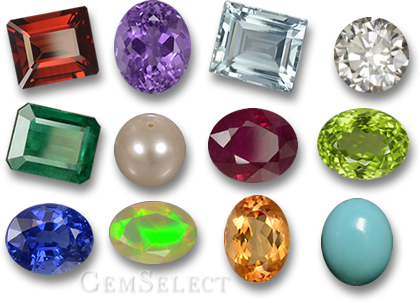Your Details
Your Details
|
Reviewed By Andreas Zabczyk
Birthstones: The OriginsBirthstones have been a part of human culture for thousands of years, with each gemstone believed to hold unique powers and significance based on the month of one's birth. These colorful stones are more than just beautiful accessories; they have rich historical, cultural, and spiritual roots that tie them to ancient traditions and beliefs. From the biblical origins to modern interpretations, the history of birthstones reveals fascinating connections between gemstones, astrology, and ancient customs. We will explore the birthstone origins, how they came to be associated with specific months, and the symbolism behind each stone.  The 12 Birthstones
Now what makes a mineral a gem is far less to do with geology and more dependent on human belief and perception. Gems are basically materials that are considered precious and valuable because of their appearance, rarity, durability or due to certain cultural beliefs. Obviously, this can vary according to location, historical period and culture.
Aaron's ceremonial breastplate is said to be the origin of birthstones; the plate held four rows of three precious stones, symbolizing the 12 tribes of Israel. "There were twelve stones, one for each of the names of the sons of Israel, each engraved like a seal with the name of one of the twelve tribes." (Exodus 28:17-20). The breastplate itself was said to be square, spanning 22 cm in length and width, and the 12 stones were mounted on a gold base, but the ordering and naming of the gems has always been under much debate and varies from translation to translation. This is also partly due to the fact that gemstones at the time didn't have specific names; they were usually named by their city or country of origin. The most common naming of the breastplate stones is as follows; the first row of stones from left to right were ruby, topaz and beryl; the second row consisted of turquoise, loose sapphire, and emerald; the third row was made up of jacinth, agate and amethyst stone; and in the fourth row were chrysolite, onyx and jasper. If we look at the New American Standard Bible reading of the breastplate we get a list that differs in places. It describes the layout of the gemstones as follows: (Row 1) ruby, topaz, emerald; (Row 2) turquoise, sapphire, diamond; (Row 3) jacinth, agate, amethyst; (Row 4) beryl, onyx, jasper. The Modern Birthstone List was created by the American National Association of Jewelers, Jewelers of America and was officially taken up in 1912. Despite its controversy and being criticized by purists for moving and dropping some of the original gems, today it is most often seen as the definitive chart of astrological birthstones. Please click here for a list of the modern birthstones and zodiac information
Traditionally, people tended to wear their own birthstone, determined by their date of birth, with the belief that the birthstone bestowed a unique set of mental and medical advantages. However, around the mid 15th century in Poland, the wearing of birthstones gained notable popularity.
The Polish custom of wearing birthstones was somewhat different. Rather than wearing their own unique birthstone, Polish people tended to own a set of 12 birthstones. As expensive and romantic as that may seem, one set would cover each month of the year and people would wear their birthstones according to the date, regardless of their own date of birth. |
